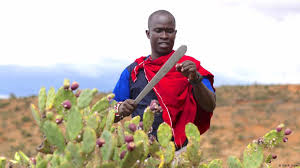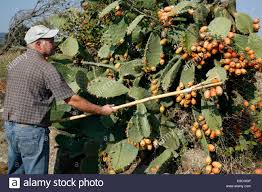
Cactus or prickly pear farming is enjoying renewed interest in South Africa. This is because of the drought and climate change as well as the commercial potential of a crop with abundant uses.
Prickly pear is a surprising simple cactus. Its easy and undemanding to grow. It is also hardy enough to survive in most climates, and boasts a cheery, delicate flower. Prickly pears are a cactus, so they need well- draining soil first and foremost. Plant them in full sun in a sandy or gravely mix and go easy on the water.
Soil
In order for the prickly pear to thrive, it needs to be planted in well-draining soil. Your best bet is a mixture that is dry, sandy, or gravelly. It can also do well in a mixture that is primarily clay, as long as it drains very well and soil does not retain much moisture. Prickly pear isn’t especially high – maintenance and can thrive in a neutral- to -acidic mixture with a pH level of 6.0 – 7.5
Water
Prickly pear cactus is extremely drought tolerant so water it less than you think it needs. In most areas, your typical rainfall will be likely be enough for the cactus to thrive. If not, you can plan to water the plant every two to four weeks.
Fertilizer
When planted outdoors in garden soil, no fertilizer is needed. However, occasional feeding may be required indoors. Use well-balanced fertilizer and let the plant tell you when it needs food. This will be when its green color starts to pale or it doesn’t flower, it should be fed.
Plant Usage
Farmers use the cactus pear to make fodder and silage. Consumers eat the fruit, bio gas made from the plan can produce electricity. Furthermore, the fruit can be used to make oil, juice, jam, jelly, and chutney and the cladodes can be turned into salads. The ruit is also used to make beer, wine, mampoer or liqueurs.
NEED TO KNOW MORE OR NEED HELP WITH A PROFESSIONAL. BANKABLE BUSINESS PLAN CONTACT US NOW FOR HELP AT:
(27)84 583 3143 or email: money@global.co.za.

